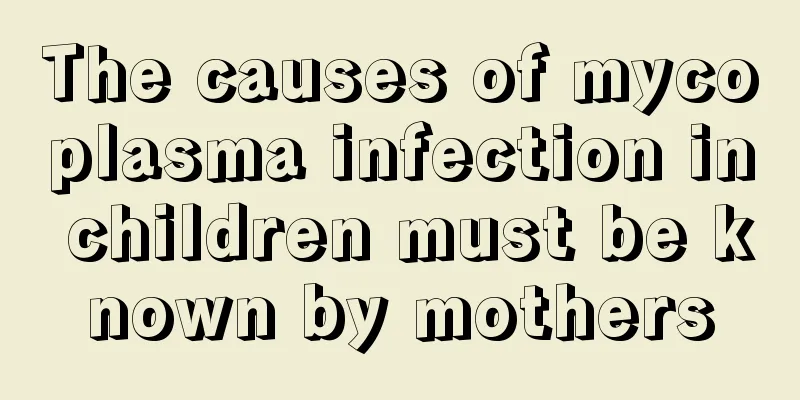My daughter has small pimples on her hands

|
Many parents will find that their daughters have millet-sized bumps on their hands. This situation will make parents extremely worried. If it is caused by some serious diseases, it will have a great impact on the child's physical health. In fact, there are many reasons for this situation, such as skin allergies, fat particles or eczema, etc. Let me explain in detail what caused the millet-sized bumps on my daughter's hands. This situation may be caused by allergies. Suggestions: You can try anti-allergic drugs. Be sure to take the medicine on time, avoid spicy and irritating foods, avoid smoking and drinking, pay attention to skin hygiene and follow-up. I wish you good health. It may also be eczema. The principles of treatment for chronic eczema are to relieve itching, inhibit epidermal cell proliferation, and promote dermal inflammatory infiltration and absorption. It is advisable to choose ointments, emulsions and mud pastes. Depending on the degree of itching and skin hypertrophy, add different concentrations of antipruritic agents, keratinogens or keratinolytics, such as 5%-10% compound pine distillate oil ointment, 2% linalool (borneol), 10%-20% black bean distillate oil ointment, corticosteroid hormone emulsion, etc. Or use half of Coptis chinensis ointment and half of triamcinolone urea cream, mix them and apply externally. treat [Treatment policy] Control symptoms, reduce recurrences, and improve patients' quality of life. [Symptomatic treatment] Look for possible triggers, such as work environment, living habits, diet, hobbies, thoughts and emotions, as well as the presence or absence of chronic lesions and internal organ diseases. [Drug treatment] 1. Internal therapy: Use antihistamines to relieve itching, and use two together or alternately if necessary. Generalized eczema can be treated with oral or injected corticosteroids, but they should not be used for a long time. 2. Topical therapy: Select appropriate dosage forms and drugs according to the condition of skin lesions. For acute eczema, local washing and wet compresses with normal saline, 3% boric acid or 1:2000-1:10000 potassium permanganate solution, and calamine lotion for astringency and protection. Subacute and chronic eczema should be treated with appropriate glucocorticoid creams, tar preparations or immunomodulators, such as tacrolimus ointment and pimecrolimus ointment. Add antibiotic preparations for secondary infection. [Daily Care] 1. Don't take a bath too often in winter, only 1 to 2 times a week; 2. The bath water should not be too hot, generally keep it at 40 degrees Celsius; 3. Use less alkaline soaps and other cleaning products, and scrub less; 4. Maintain the temperature and humidity of the room. [Dietary adjustment] 1. Supplement vitamins appropriately and eat more foods rich in vitamins such as carrots, green leafy vegetables, and fruits. 2. Avoid eating some irritating foods, such as onions, ginger, garlic, strong tea, coffee, alcohol and other foods that are prone to cause allergies, such as fish, shrimp and other seafood. [Other Notes] Avoid contact with products containing chemical ingredients, such as soap, laundry detergent, and dishwashing liquid. |
>>: When do newborns' tear glands open?
Recommend
Child's chin is purple?
If a child's chin turns purple, it is mostly ...
Should I have surgery for my hernia?
Hernia, which we commonly call intestinal hernia,...
What kind of exercise can children do to grow taller?
As we all know, our height is determined by innat...
What is the baby's development standard at 13 months?
Families with children know that babies develop a...
What is the height and weight of a 30-month-old baby?
In many families today, the baby is the "anc...
How to treat sinusitis in children
There are many people around us suffering from rh...
What are the folk remedies for treating babies' long-term cough?
What are some folk remedies for treating a baby’s...
What should children pay attention to in their diet for pneumonia?
If a child suffers from pneumonia, parents will b...
What are the symptoms and treatment of alcohol poisoning in children?
In family life, it is inevitable to encounter man...
What causes sinusitis in children?
Nowadays, sinusitis is a disease that many of our...
What to do if your child has a runny nose, cough, and phlegm
When children have coughs and runny noses, they s...
What are the early symptoms of baby pharyngitis
Many people in life are still relatively unfamili...
How long should I take a child's temperature?
Most parents are taking care of their children fo...
What are the complementary food arrangements for five-month-old babies?
When taking care of a five-month-old baby, you mu...
What should I do if my child grows slowly?
I believe that parents are most afraid of hearing...









